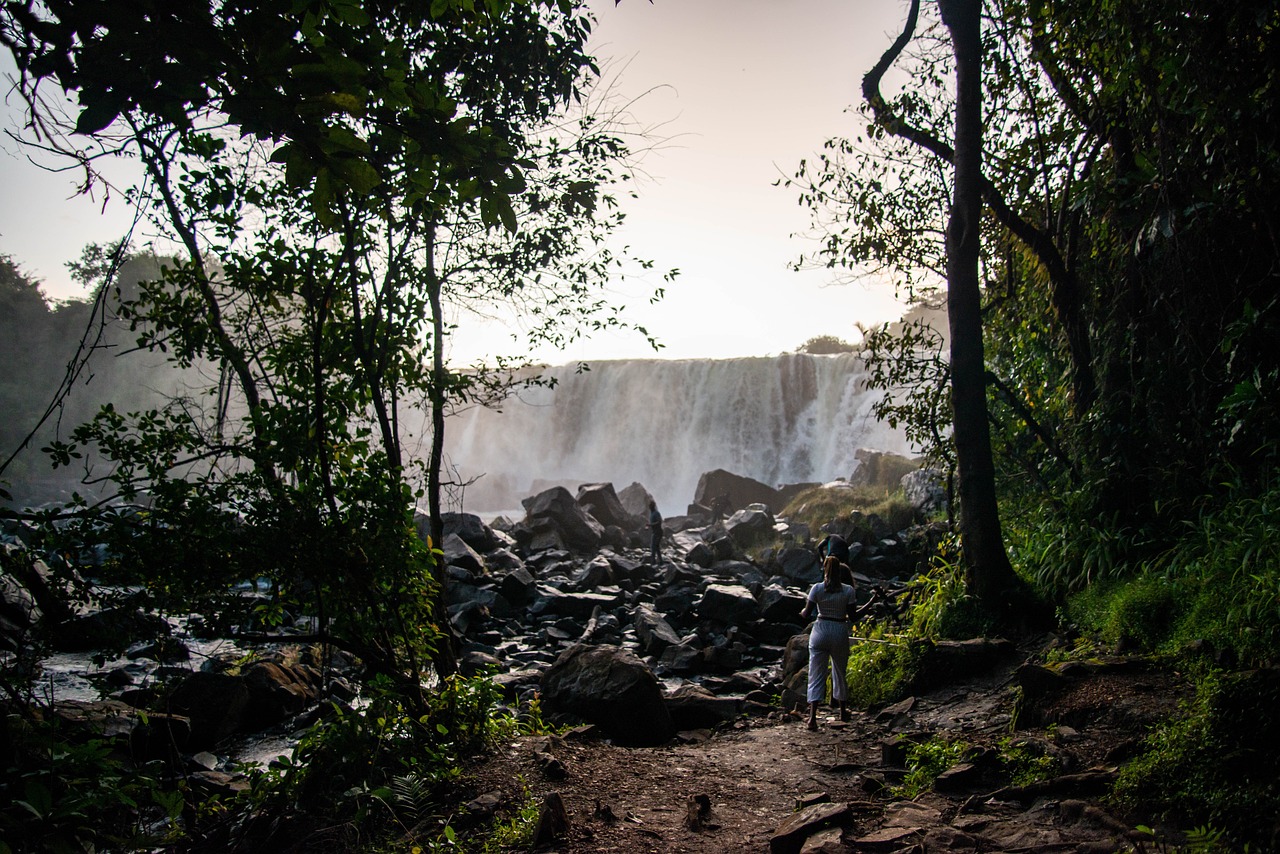
6 Must Visit Waterfalls in the Smoky Mountains, USA
More than 2,000 miles of rivers and streams flow out of the Great Smoky Mountains, which receive as much rain as a tropical rainforest. As a result, the park is home to more than a hundred stunning waterfalls and cascades. Usually, visitors feel overwhelmed by the abundance of waterfalls and cannot figure out which ones are worth exploring. With that in mind, we have devised a list of the must visit waterfalls in the Smoky Mountains. So without further ado, let’s dive right in:
1. Laurel Falls
When a forest fire threatened the Cove Mountain region in 1932, the Laurel Falls Trail was constructed to allow fire trucks to reach the area. However, the erosion of the route was a problem by the early 1960s, when Laurel Falls had already become a popular hiking destination.
There is a solid reason why Laurel Falls is the most photographed location in the Smoky Mountains. It is stunning, with a paved walkway from the parking area to the waterfalls. The out-and-back distance is 1.3 miles (2.6 miles round trip). You will witness plenty of lush plant life along the route, including mountain laurel, which usually puts on a show in May.
Hikers have reported seeing black bears both early in the morning and late in the evening. During the warmer months, the parking lot gets occupied by nine in the morning. Therefore, you must get there early to beat the crowds and find a parking place. One of the best ways to arrive early to Laurel Falls is to find accommodation near this destination. Considering the growing number of smoky mountain luxury cabins, this will not be a tough ask.
2. Abrams Falls
Among the many attractions in Great Smoky Mountains National Park, Cades Cove is by far the most popular. As you proceed along the Cades Cove Loop, you will stumble upon the trailhead for Abrams Falls. Abrams Falls is 20 feet high, but the sheer amount of water plunging over the edge makes up for its modest stature and is one of the must visit waterfalls in the Smoky Mountains. The waterfall’s base is a long and deep pool that adds to the area’s beauty. The waterfall and the creek got their names from a prominent Cherokee leader whose community was located a few miles farther downstream.
Multiple paths lead to the waterfalls. However, for day hikers, the five-mile out-and-back from the Cades Cove Loop Road trailhead is the best route. It takes hikers through various ecosystems to the waterfalls, including hardwood rainforests, rhododendron groves, and a meadow. As you make your way to the rumbling waterfalls, keep an eye out for opportunities to cross small streams that are tributaries of Abrams Creek.
3. Mingo Falls
In the Smoky Mountains, Mingo Falls is widely regarded as one of the region’s most popular tourist spots. It attracts visitors from all over the United States due to its 24-hour accessibility and free entry. About 120 feet in height, Mingo Falls is among the tallest waterfalls in the southern Appalachians. The waterfall plunges nearly 200 feet down a rocky cliff face and rocks with a spectacular roar.
The hike to the falls is steep and challenging but well worth it. The trip is a quarter of a mile long and consists of 161 stairs leading to a magnificent wooden observation bridge over Mingo Creek in front of the falls. Many locals suggest going first thing in the morning to escape the crowds and have the best opportunity of seeing Mingo Falls in the early fog.
4. Rainbow Falls
Rainbow Falls, so named for a spectacular optical illusion, cascades down the slope of 6,593-foot-high Mount LeConte (the third-highest mountain in the park). The falls throw multicolored rays resembling rainbows when sunlight meets the tumbling curtain of water at precisely the perfect angle, often between the middle of the morning and the late afternoon. To get a view of the multicolored spectacle, start at the Rainbow Falls Trailhead in the northeastern national park area. After hiking for 5.4 miles, you will get reach Rainbow Falls which is one of the must visit waterfalls in the Smoky Mountains.
It is magnificent how the creek cascades down the cliff and into a hidden grotto surrounded by boulders. Although the distance traveled to get to this waterfall is moderate, it involves a steep climb of more than 1,600 feet, which could test your knees.
5. Grotto Falls
The Great Smoky Mountains National Park has no other waterfalls with a walking route right behind them, making Grotto Falls one of a kind. As a result, hikers may take a respite in the mist and cool air during summer. In addition to that, it is an excellent place to search for salamanders.
If you want to enjoy fresh air in the Smoky Mountains but do not wish to walk for several kilometers, this is the right trail for you. The whole distance from the trek to the waterfall is 2.6 miles. The route is very flat and wide. That said, a few rough patches make it necessary to wear shoes with closed toes. Grotto Falls’ height is 25 feet. In contrast to the other waterfalls in the park, visitors can go behind it and take some fantastic photographs.
6. The Sinks
You need to hike to reach the majority of Smoky Mountain waterfalls. But the Sinks is an exception. Located 12 miles from Sugarlands Visitors Center along Little River Road, this waterfall is more of a stunning cascade as it winds around some giant stones in the river to create a beautiful sight.
This magnificent waterfall diverts the full force of Little River, resulting in raging currents. The river’s force has worn down the rock over time, resulting in a deep swimming hole that is great fun to explore during summer.
Conclusion
Annually, almost 11 million tourists go to the Great Smoky Mountains to marvel at the region’s breathtaking scenery. The national park features gorgeous vistas of the surrounding mountains and some spectacular waterfalls. We hope our guide to the six finest and must visit waterfalls in the Smoky Mountains helps you make the most of your next holiday in the Smokies.




